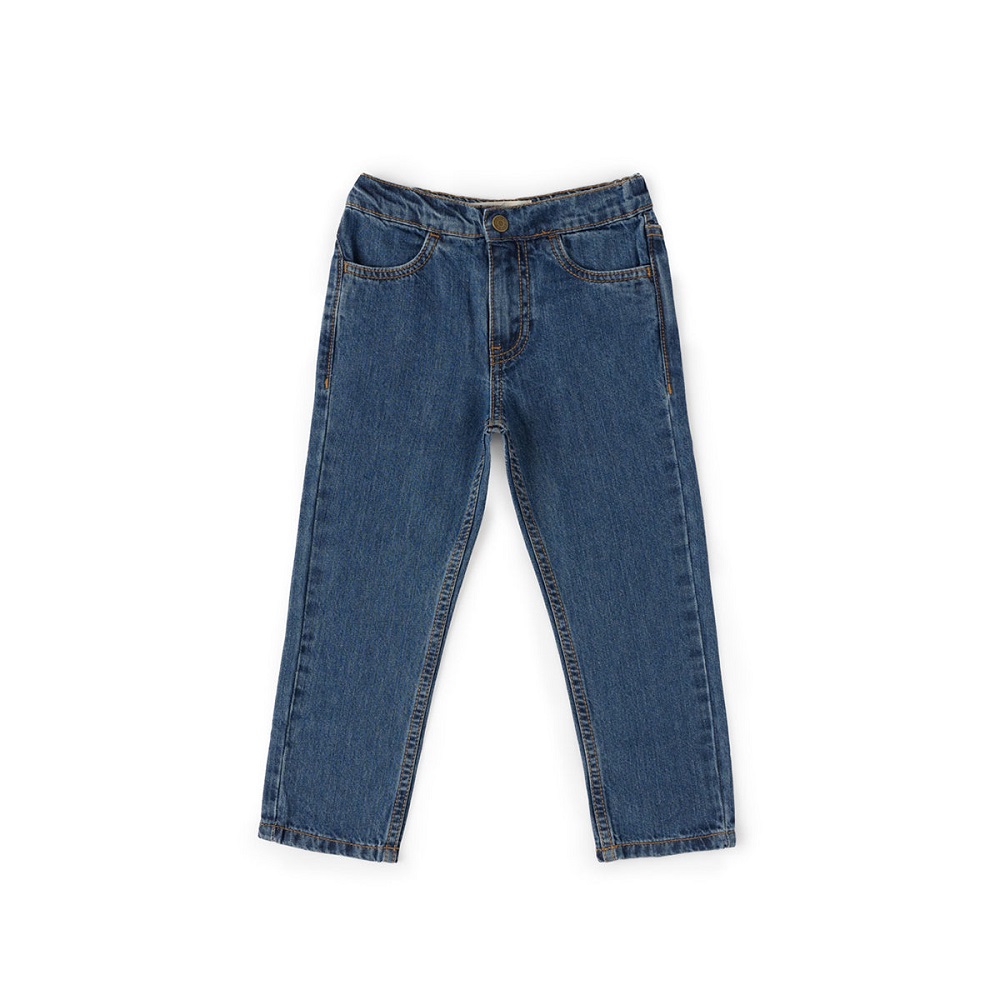How to remove oil stains from jeans? Oil stains can be frustrating and seem challenging to remove from jeans. Whether it’s from cooking, makeup, or other sources, oil stains can leave unsightly marks on your favorite pair of denim. However, with the right techniques and products, you can successfully remove oil stains and restore your jeans to their original condition. In this guide, we will provide effective methods for removing oil stains from jeans, helping you salvage your garments and extend their lifespan.

Act Quickly:
The key to effectively removing oil stains from jeans is to address them as soon as possible. Acting quickly helps prevent the stain from setting deeper into the fabric. Follow these steps:
- Blot: Use a clean and absorbent cloth or paper towel to gently blot the stain. Do not rub or scrub, as this can spread the oil and make the stain more difficult to remove.
- Absorbent Powder: If the stain is fresh, sprinkle an absorbent powder like talcum powder, cornstarch, or baking soda onto the stain. Allow it to sit for a few minutes to absorb the oil before brushing it off with a clean cloth or soft-bristled brush.
Pretreating the Stain:
Pretreating the oil stain before washing can significantly improve the chances of successful removal. Consider the following pretreatment methods:
- Dish Soap or Liquid Detergent: Apply a small amount of dish soap or liquid detergent directly to the oil stain. Gently rub the soap into the fabric, focusing on the stained area. Leave it to sit for at least 15 minutes before laundering the skinny jeans baggy as usual.
- Shampoo: In the absence of dish soap or detergent, you can also use a mild shampoo. Apply a small amount directly onto the oil stain, agitate the fabric gently, and let it sit for about 15 minutes before washing.
Washing Techniques:
Proper washing techniques can further aid in removing oil stains from jeans. Consider the following tips:
- Hot Water: Check the care label on your jeans to ensure they can be washed in hot water. Hot water helps dissolve the oil, making it easier to remove. However, if your jeans are not suitable for hot water, use the warmest temperature specified on the care label.
- Stain-Removal Spray: Pre-treat the oil stain with a commercial stain-removal spray or a homemade solution of equal parts water and vinegar. Gently rub the solution into the stain and let it sit for a few minutes before laundering.
- Laundry Detergent: Use a quality laundry detergent that is suitable for your jeans’ fabric. Follow the instructions on the detergent packaging for the recommended amount to use. Longer wash cycles and setting the machine to the highest water level suitable for your jeans can help remove stubborn stains.

Additional Techniques for Stubborn Stains:
For persistent oil stains, you may need to employ additional techniques. Consider the following methods:
- Spot Treatment: If the stain remains after washing, pre-treat the area again with dish soap or liquid laundry detergent. Gently rub the soap into the stain and allow it to sit for an extended period, preferably overnight, before laundering as usual.
- Vinegar Solution: Create a mixture of equal parts vinegar and water. Apply it directly to the oil stain and let it sit for about 30 minutes before washing. Vinegar helps break down the oil and helps remove any residual odor.
- Commercial Stain Removers: If all else fails, you can try using a commercial stain remover specifically formulated for oil stains. Follow the product’s instructions carefully and apply it to the stain before laundering the straight leg jean.
Drying and Assessing the Stain:
After washing, allow your jeans to air dry naturally or according to the care label instructions. Once dry, assess the stain to determine if it has been completely removed. If a slight residue remains, repeat the pretreatment and washing process until the stain is fully removed.

How to store jeans
Jeans are a timeless and durable wardrobe staple, prized for their versatility and comfort. To ensure your jeans retain their shape, color, and overall quality, proper storage is vital. From hanging to folding techniques, the way you store your jeans can significantly impact their longevity.
Assessing Cleanliness:
Before storing your jeans, it is important to assess their cleanliness. Follow these steps:
- Spot Clean: If your jeans have specific spots or stains, address them individually before storage. Use a mild detergent, a soft cloth, and gentle strokes to dab or rub the affected area.
- Laundering: Clean your jeans thoroughly before storing them for an extended period. Follow the care instructions on the jeans’ label and choose a suitable washing method, such as machine or hand washing, turning them inside out to preserve color.
Proper Folding Techniques:
Folding your jeans correctly is a space-efficient and effective way to store them. Consider the following folding techniques:
- Vertical Fold: Lay your jeans on a flat surface and fold them lengthwise in half, aligning the legs. Then, fold them again vertically, starting from the waistband down, ensuring the hemlines are aligned. This technique allows you to stack the jeans easily in a drawer or on a shelf.
- KonMari Fold: Adopt the popular KonMari method by folding your jeans into a compact and neat rectangle. Begin by folding one leg across the waistband, then fold the other leg to overlap the first fold. Finally, fold the waistband down to create a compact rectangular shape.
- Hanging Fold: If you prefer to hang your jeans, fold them once horizontally by tucking one leg into the waistband, then drape them over a hanger. This method helps maintain the shape of the jeans while minimizing creases.

Hanging Techniques:
Hanging jeans can be a viable option if you have sufficient closet space and prefer to keep them wrinkle-free. Consider the following hanging techniques:
- Pant Hangers: Choose pant hangers with smooth clips or clamp features to avoid leaving marks on your jeans. Hang jeans by folding them in half lengthwise at the side seams and clipping the waistband onto the hanger.
- S-Hooks: Alternatively, you can use S-hooks to hang your jeans. Attach the S-hook to a sturdy rod or hook and slide one leg of the big ass jeans through the hook, allowing them to hang freely. This method helps maintain the jeans’ shape and reduces stress on the waistband.
Proper Storage Conditions:
Creating suitable storage conditions is important for preserving the quality of your jeans. Consider the following factors:
- Temperature and Humidity: Store your jeans in a cool, dry place. Avoid extreme temperature fluctuations and high humidity, as they can promote mold and mildew growth, affecting the fabric’s integrity.
- Sun Exposure: Avoid exposing your jeans to direct sunlight for extended periods. Intense sunlight can fade the color and weaken the fabric over time. If possible, store them in a dark or shaded space.

Conclusion:
Removing oil stains from jeans is a process that requires prompt action and the use of appropriate techniques. Acting quickly, pretreating the stain, employing proper washing techniques, and using additional methods for stubborn stains can help successfully remove oil stains from your jeans. Remember to always check the care label instructions and conduct spot tests on inconspicuous areas of the fabric before applying any products. With patience and persistence, you can restore your jeans to their original condition and enjoy their longevity.










